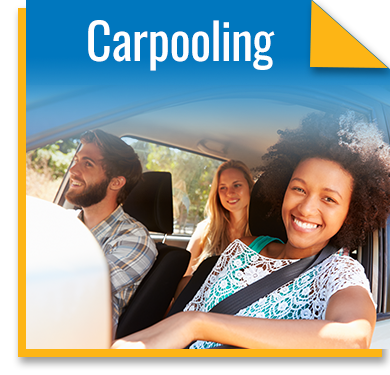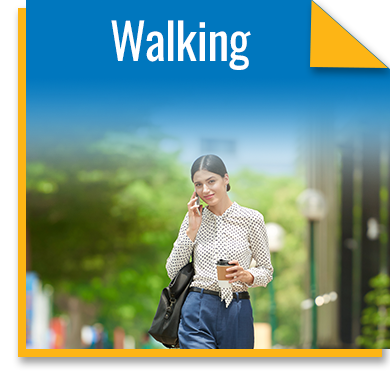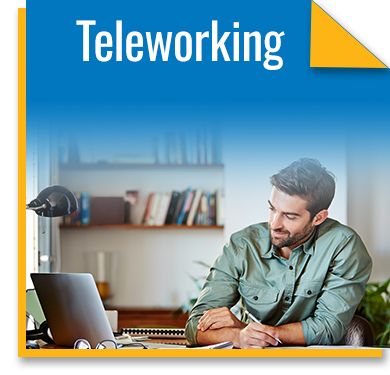Commute Options
Commuters in Spokane County have many options when it comes to leaving their cars at home. Why drive alone to work, when there are less expensive ways to get there? But don't just take our word for it. Check out the Commute Cost Calculator to determine what your commute actually costs and how much you could save by using one of seven other commute modes.
|
|||||||||
|
|||||||||
Compressed Work Week Schedules
Compressed work weeks are an option where employees work a full-time schedule in fewer days.  Employees who compress their work weeks are generally able to avoid the peak commute time each day by arriving early and/or staying late. Employers benefit from extended hours of customer service and production, reduced operating costs, improved employee morale, reduced employee absenteeism and create talent recruitment advantages.
Employees who compress their work weeks are generally able to avoid the peak commute time each day by arriving early and/or staying late. Employers benefit from extended hours of customer service and production, reduced operating costs, improved employee morale, reduced employee absenteeism and create talent recruitment advantages.
In any compressed work week program, there must be adequate coverage in the office for employees who are taking their day off. Generally, this means that not everyone takes the same day off. Given the choice, most employees elect to take Friday as their day off, followed in order of preference by Monday, Wednesday, Thursday, and Tuesday. You may want to rotate days off every six months so that every employee gets a three-day weekend.
Employees who compress their work weeks are generally able to avoid the peak commute time each day by arriving early and/or staying late. Businesses benefit from extended hours of customer service and production and it helps in recruiting and retention among other benefits.
The most commonly used variations of compressed work weeks include:
4/10 Work Week
| Monday | Tuesday | Wednesday | Thursday | Friday | Total Work Week | Calendar Week |
| 10 | 10 | 10 | 10 | off | 40 | 40 |
A 4/10 schedule allows employees to work four 10-hour days in one week (instead of five 8-hour days) and have one extra day off (called a "flex day"). The day off does not have to be Friday, as illustrated above; it can be any day of the week. You can divide your department into two work groups, one taking Fridays off and one taking Mondays off, or arrange coverage so that different employees are off on different days. Some organizations have every employee on a 4/10 schedule and close down for the fifth day.
9/80 Work Week
Monday
Tuesday
Wednesday
Thursday
Friday
Total Work Week
Calendar Week
Week 1
9
9
9
9
8
40
44
Week 2
9
9
9
9
off
40
36
A 9/80 schedule operates over a two-week cycle. Employees commonly work four 9-hour days and one 8-hour day the first calendar week and four 9-hour days with an extra day off the second calendar week. Again, the day off does not have to be Friday.
If you are considering a 9/80 schedule for non-exempt employees, federal law requires payment of overtime for non-exempts who work more than 40 hours in a work week. To avoid paying overtime, you can redefine the work week for your unit to start at the midpoint of the eight-hour day in your schedule. In the example above, each work week could be defined as starting Friday at noon and ending the following Friday at noon. This creates two 40-hour work weeks. Consult with your Human Resources (HR) Department if you have questions about how to do this.
3/12 Work Week
| Monday | Tuesday | Wednesday | Thursday | Friday | Total Work Week | Calendar Week |
| 12 | 12 | 12 | off | off | 40 | 40 |
A 3/12 schedule enables employees to work three 12-hour days with two extra days off each week. The days off do not have to be Thursday and Friday. This schedule is often used for weekends and other difficult-to-staff shifts. A variation has employees work four hours on a fourth day each week or eight hours on a fourth day every other week.
Note: This information is based on The Manager's Guide to Compressed Work Weeks and Flextime, published in 1998 by Washington State University Cooperative Extension Energy Program in collaboration with Commuter Challenge and with additional support provided by Washington State Department of Transportation.
![]()
Resources
STA Routes & Schedules - Riding the bus is easy and convenient. Find the route and schedule that works best for you.
STA Public Rideshare Info - Why put miles on your personal car, when you can put them on a STA owned van?
STA Park and Ride Lots - Don't live near a bus stop, go to the nearest park and ride and catch the bus.
Bike Map provided by Spokane Regional Transportation Council
CommuteFinderNW - find a carpool partner or join a vanpool
Telework - find out more and how to get a telework program started












